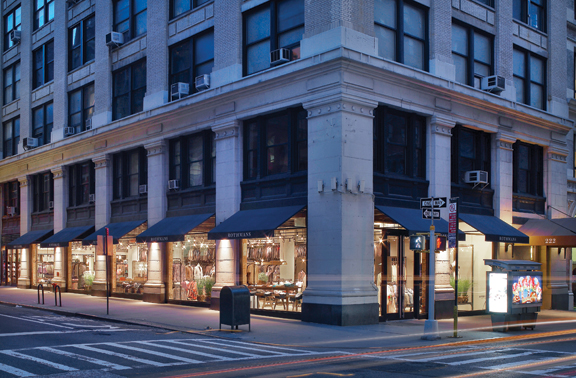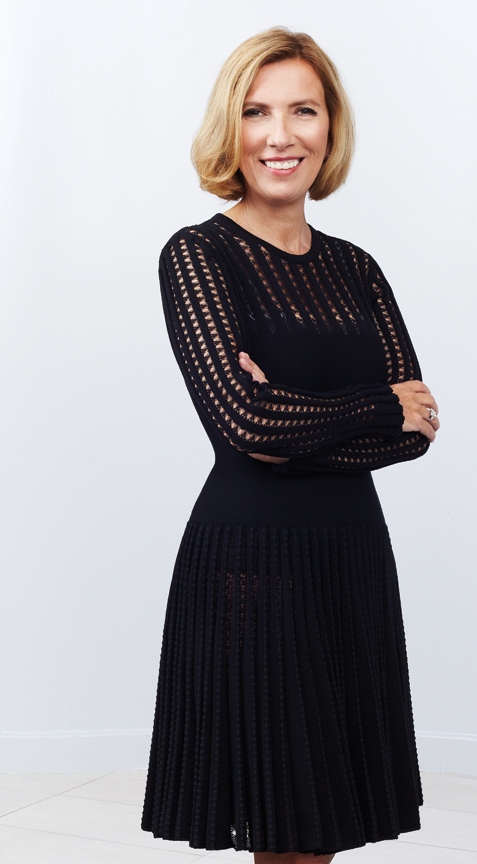Liz Rodbell: An Aggressive Stance


Chief merchant since 2012 and now president of Hudson’s Bay and Lord & Taylor, Rodbell lives in Manhattan with her husband Mitchell, a dress designer, and their two teenaged daughters. She’s in Canada three times a month, and has taken both of her HBC teams (500 people) on field trips to watch the Blue Jays.
After 30 years at Lord & Taylor, what do you see as the key changes under HBC management?
The environment today is highly innovative, inspiring creativity within the organization. There’s a tremendous sense of pride about the strong cultures of Hudson’s Bay and Lord & Taylor, but our goal is to uphold the history of both stores with a focus on the future. It’s a really exciting time for us as we look forward to what’s next: from the time Richard purchased Lord & Taylor and then Hudson’s Bay, to going public and then buying Saks, we’re very excited about the whole organization, the synergies and what we can learn from each other.
We’ve got great momentum going: we recently announced a new CEO, Jerry Storch, who’s a very talented addition to our senior leadership team. He’s a well-skilled, astute executive who’s very strategic.
How would you define that strategy? What’s the mission for Lord & Taylor and Hudson’s Bay going forward?
Our mission is to be the best retailer in North America. We’ll do this by continuing to lead with fashion, offering real value, and constantly evolving our service model. Our goal is to offer memorable service in all of our stores and at all touchpoints to the consumer. As our digital business continues to be on fire, there needs to be a seamless experience. Since our focus is on that consumer who is truly time-starved, we have to ensure that we are servicing him/her as effectively as possible whenever, wherever, however he or she chooses to shop. It’s a very big mission on my plate: to evolve that service experience to the highest level.
And how do you do that? How do you attract the caliber of sellers you’re looking for? Are commissions the answer?
I believe in a blended service model: everything from commissioned sellers to personal shoppers to ambassadors greeting customers at the door to our larger core associate population. We use various metrics and lots of analysis and customer feedback. We are very focused on this: we love customer feedback and we evaluate customer reviews by store level. We have new technology to facilitate this. In fact, effective this fall we’re integrating IT from Saks into our system; we have top executives working on this as it’s a primary focus for all of our stores.
How would you define your competitive advantage at the department store level?
We see everyone as competition, not any individual store. And we view competition as positive: it keeps us on our toes. The retail landscape is changing, especially in Canada with Saks and Nordstrom coming in. But we certainly have the benefit of Hudson’s Bay leadership coast to coast. We are the national department store in Canada, and we’re really winning in menswear where our growth has been a bit outsized. Over the past three years, menswear increases have been especially strong in footwear, modern suit separates and premium denim. We dominate in these categories and we’ve also got the number-one dress shirt share in the country.
So our current goal at Hudson’s Bay is to have the most dominant e-commerce business, to broaden the spectrum of offerings to create that endless aisle. (Online business has been less advanced in Canada than in the States.)
The mission for Lord & Taylor, a regional player in the northeast, is to capitalize on our opportunity to localize assortments and connect well with our demographic, to take the time to curate assortments more effectively. We are focusing on expanding men’s with more real estate: we’ve renovated Fifth Avenue, Boston, Westchester; we’re about to do Stamford; we’re looking at Garden City. We’ll continue to invest in men’s as it continues to be a growth opportunity for us.
Would you discuss your strategy regarding price promotions? Do you envision a time with fewer sales, coupons, off-price events?
That’s an interesting question because one of our primary focuses is value: ensuring that we give our customers a quality product at the right price, which might be the ticket price or it might be on sale. We want to focus on what works best for our customer and not be stuck in one place, so we’re looking at a blended model that might also include some concessions (like we have with BCBG in women’s); we’re certainly open to leased models with certain brands as an opportunity. It really depends on the category, but the reality is that our customers are expecting value and we want to deliver what they expect.
A great example of regular-price potential is men’s skincare: it’s a very small business for us today, but it’s not promotional so we see it as a niche opportunity for us to grow sales and margins.
Does this mean you’re attempting to trade up?
I don’t know that trading up or down has anything to do with price promotions. Our mission is to continue with the types of assortments you’re seeing now. We offer an array: in flagship stores and gateway cities we can certainly sell higher price points; in some we can go very high. We have the ability to offer a fairly broad spread in price ranges.
Yet with all the excitement in men’s, you are still known as a women’s store; what are you doing to change this?
You’ve seen the expanded assortments and broader offerings in contemporary product. We’re matching that with an expanded spend in men’s marketing: great fashion books, a lot of events. And customers are responding.
In fact, I was recently at a meeting that examined the last two years’ data on customer acquisition. Our new customer growth rate is actually higher in men’s than it is in women’s. We need metrics to show us what works best regarding networking, marketing, storytelling, and of course this is a journey, not a destination. We will continue to evolve our messaging and expand our reach.
Who have been your key mentors in your journey and what have you learned?
I’ve had many along the way, but I’d have to say that my father, although not in our industry, has inspired me the most. From him, I learned to go after what I believe in, to focus on making things happen. His message: not everything will be easy but with determination, you can do it!



